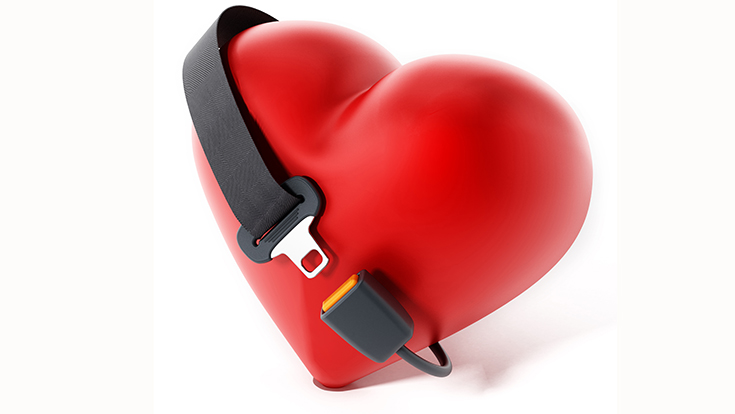Go EAST – Fire appliance seat belts and bringing about behaviour change
I have been re-reading the essays of Dr Burton Clark this week, writes Ian Greatbatch, as they relate to a lot of my current work, trying to figure out how you get people to change their behaviour and practices – ultimately to act more safely. Dr Clark used shock tactics in a Firehouse Magazine article a few years ago, when he said that any department, colleague or manager who turned a blind eye to minor safety-related rule breaking, such as not wearing a seatbelt in the back of a fire appliance, was partly to blame for deaths and injuries related to that rule-breaking.

Destinacigdem / 123rf
“If you do not wear your seat belt when riding on the fire truck, if you do not make your partner put his or her seat belt on, if you drive the fire truck and all passengers are not buckled up, if you are the officer and you do not enforce the seat belt policy, if you are a chief officer and do not hold your company officers accountable, if you are the fire chief and you know that you do not have a 100 per cent compliance 100 per cent of the time with your seat belt policy – you killed Firefighter Brian Hunton,” he said.
Dr Clark spent years researching why US firefighters died as a result of not wearing seatbelts and, more critically, how to go about reversing these tragedies. He initiated the ‘Seatbelt Pledge” in the US in 2006 while at the National Fire Academy. This that led to the 2011 ‘Everyone goes home’ campaign led by the National Fallen Firefighters Foundation. There is a current campaign called the ‘International First Responder Seatbelt Pledge’, which is a continuation of that programme.
There are accompanying videos and resources, that highlight the risks, and repercussions of not wearing a seatbelt; from potential dismissal, through to death or serious injury.
The thing is though, have you ever tried to put a seatbelt on in the back of a fire appliance? The reason I ask is that although clearly a major safety issue across fire services in the UK and the US, it’s also the case that it’s not very easy to actually do. A study in 2007 found that 25 per cent of US firefighters could not buckle their seatbelts even if they wanted to, as a result of their size, personal protective equipment (PPE) and the positioning and design of the belts.
So, to go back to my question, have you ever actually tried to do it? There isn’t a lot of room in the back for a start; the seatbelts are set back behind the BA sets and the clips are hard to find or see in the dark. There is also the pressure to prepare for and get to the job – put simply, there are other things that start to become a priority in the mind, which leads to firefighters giving up with seatbelts and getting on with other things.
So what next? We have a situation where it is clearly advisable and preferable to buckle up, not least because you might lose your job through disciplinary action, or through injury, but my guess is very few people actually do buckle up in typical UK fire appliances, because it’s almost impossible to actually achieve.
The point I’m making is that telling or threatening people is never going to be enough to get them to change their behaviour. What we need is to work within Behaviour Change rules, and work with firefighters if we want a safety-driven change to take place.
The UK Cabinet Office’s Behavioural Insights team came up with a useful mnemonic: EAST. In order to get a group to change their behaviours the change message needs to be:
-
Easy
-
Attractive
-
Social and
-
Timely

UK Cabinet Office's Behavioural Insight Team's EAST Mnemonic
Dealing with the first one only, clearly putting seatbelts on in a truck, wearing PPE, with all the distractions of getting to the job (not to mention the cultural barriers in place) is not easy. It’s never been easy, which is why people don’t do it. Telling people they should, or threatening people clearly aren’t working and behaviour change literature would suggest this approach will never work. What is required, is to make it easy to do. Future changes to truck design, as a result of contaminant control, where BA sets are not stored in the crew cab will make a difference, with normal seatbelts presumably being fitted.
The second quality is attractiveness – so how do we draw firefighters to seatbelts? We are more likely to make a positive change if our attention is drawn towards something – so marking it, making it a bright colour, or personalising it in some way. We can also introduce some sort of reward for positive behaviour. League tables for compliance have been used in the past, and if linked to a tangible prize, then this might have an impact.
The third quality – social – is the approach employed by the Sealtbelt Pledge. We are more likely to change our behaviour if we do it as a social group. Signing up and agreeing in a social group means we are making a commitment to those we respect and whose approval we seek, meaning we are more likely to follow through on our promise.
Finally – making it timely. If we talk to people eat a time when they are most receptive, we are more likely to have an effect. So times when people’s schedules or habits are already changing are more profitable. We are also more influenced by changes that we perceive as being immediate, rather than delayed. Linking a reward, or message to the actual journey in hand, rather than theoretical, future journeys has the potential to be more successful.
So, what do we do? Well, other events are probably going to overtake this issue, namely the other big health issue facing firefighters – cancer and contaminating fire products on PPE. As the dangers of sharing cabs with fire products and the accepted difficulty in decontaminating on sites, it is more likely that certainly BA sets, and possibly PPE will be stored in the back of the appliance, and not in the crew cab.
I would like to think that the obvious outcome for this will be that it now becomes routine for all firefighters to just put on a seatbelt, as they would in any other vehicles. The removal of the “Easy” barrier (the fact that it’s nearly impossible!) should result in normal practice taking the fore.
However, there are many more examples of behaviours, practices and beliefs that we know – within the sector – need to be challenged and changed. We are also continually engaged in safety campaigns at a local and national level, concerning water safety, home fire safety, safety on the roads, smoking and cooking risks and so on. The EAST acronym is a useful way to improve the likely effectiveness of any campaign, and contains rules and recommendations we should take advantage of in any new project.
Dr Ian Greatbatch FRGS, FHEA, MEPS has spent the last 15 years working in both research and response roles. He was worked for the RNLI and Fire Service, and was formerly an Associate Professor at Kingston University London, where he was the Course Director for Disaster Management. He has published widely on matters concerning Forensics, Lifeguarding, Search and Rescue, Fire and Rescue, Disaster Management and is currently an Emeritus Researcher at the University of Portsmouth
Ian Greatbatch, 29/05/2019